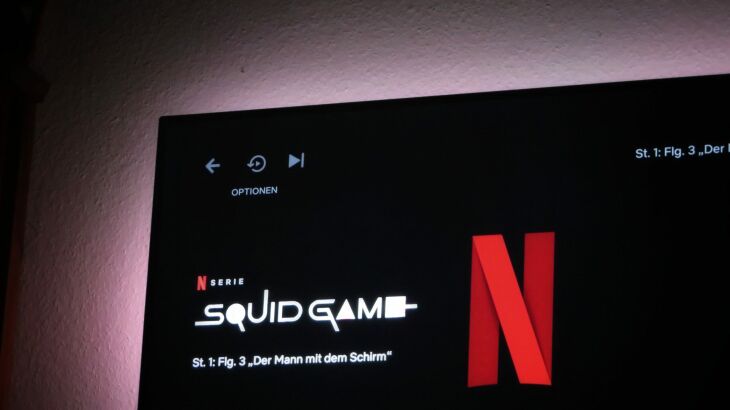Spoiler alert: This article includes two scenarios that are part of the episodic structure of Squid Game, the Korean survival drama that is taking the world by storm. While this article doesn’t contain narrative spoilers, it does include two ‘games’ featured in the story arc of the show. If you haven’t binge-watched it yet, we will be determining if engineers could ace these theoretical games with their practical knowledge, and the result might surprise you. That’s perhaps our real spoiler.
If you have ever watched a show or film and thought “Hmm, I could do that”, then Squid Game might not be for you.
This lauded new show on Netflix has created a global phenomenon because it subverts exactly that sort of thinking, you don’t ever want to take part in this Gladiatorial-style series of games where you die if you lose.
While the show itself offers subdued commentary on capitalism, our focus will be rather on the engineering aspects of the show.
Since Squid Game employs survival games that use algorithms and technology, it is worth estimating how engineers would fare in them, considering that the show relies on the idea that knowledge is the only way to get through one round of games and compete in the next.
What is Squid Game about?
Squid Game is essentially an action-packed thriller of desperate people who sign up to play a mysterious series of games based on children’s games.
The winner will win millions, and ensure care-free living without debt. Perhaps the trailer will give you some insight…
The show’s director Hwang Dong-hyuk deliberately chose to include universal childhood games that are relatable and simple to understand in the show.
He confessed that behind the scenes the games involved a lot of planning to make them visually interesting for on-screen entertainment.
According to him, the first game played in the show is Red Light, Green Light which is a game that most people are familiar with (the game might just have country-specific names like Statues).
The robot used in the game is modeled after a girl from children’s textbooks in Korea making the scene so visceral since something from childhood transforms into a harrowing fight for survival.
Round One: Red Light, Green Light
In the first of a series of games played in Squid Game, Red Light Green Light seems the simplest. But it’s an interesting game that becomes extremely hard when a robot is engineered to play against humans.
In the game the simple goal players have is to move from one point in an arena to the finish line. Players can only move when a song is played and the robot’s head (with its motion-detecting camera eyes) is turned away from the player.
When the nursery rhyme-esque audio cue stops then players have to freeze in the position they are in. If they move while in freeze mode the robot will capture the movement, and well, the red light for stop takes on a whole other meaning.
Back in 2015 at the 2015 Third International Conference on Robot, Vision, and Signal Processing authors Yutaka Hiroi and Akinori Ito presented the conference paper Playing with a Robot: Realization of "Red Light, Green Light" Using a Laser Range Finder.
In 2021 it almost reads like a forbidding piece of academic literature considering how their findings would influence Squid Game.
Hiroi and Ito’s is a study to determine a robot and a human playing Red Light Green Light.
In the paper, much like Squid Game, the robot would be “it” deciding if a player is out or not. The player would be human.
The authors determined that three functions would be needed for the robot to play the game: Recognizing the players, being able to track player progress, and also determining when human players are “out”, thus eliminating them from the game until there’s a winner.
To make the robot functional they put a laser range finder (LRF) on a mobile robot.
In so doing the robot calculated the distance between the present and past movement and whether players moved. If the distance was more than the threshold set the robot would determine if the player was “out” or not.
The first task for the robot would be to detect and track active players in a game.
The authors used heuristics to help determine whether there were any borders of objects between scan points when setting up the game.
When objects are scanned the robot will know if it's human or not thanks to basic width.
They managed to develop the robot and applied mostly tracking algorithms to it to determine the robot’s effectiveness to play the game.
As it turns out robots could be ideal deciders when playing this game as they managed to detect the players and measure their movement of the player. Most importantly the robot could figure out when a player was out.
Round Two: Tug of War
In Squid Game players are divided into two teams to compete in a traditional tug of war.
The parameters are the same, two teams hold onto one rope, either team at either end, then they have to pull and maneuver to be able to pull another team over to the winning teams' side.
In Squid Game however this is played on two platforms, and the losing team loses more than just their honor.
Tug of War can be optimized by the keen player. The Iranian study, A Novel Meta-Heuristic Algorithm: Tug of War, explores how metaheuristics will be used to determine how to increase the probability of winning at Tug of War.
The authors know that tug of war usually depends on variables and could be hard to analyze, but ideally, they used a framework where the two competing teams have weight and team 1 (Wi) and team two (Wj) are merely considered two objects on a smooth surface.
In a game result of pulling the rope, the teams are subjected to two equal and opposite forces according to Newton’s third law.
For team Wi as far as the pulling force is less than the maximum static friction force as an object Wi rests in place. When object Wi moves toward object Wj it accelerates according to Newton's second law because the starts from zero velocity and its new position can be determined.
Metaheuristic algorithms are then added and compared to look at random change and other factors at play during a game of tug of war. What the researchers found is a novel population-based meta-heuristic algorithm based on a game of tug of war.
When the Tug of War Optimization (TWO), considers each candidate solution as a team participating in a series of tug of war matches, TWO uses a combination of random results and exploits favorable data that has previously been obtained to perform a global optimization.
As the game proceeds the candidate (teams’) solutions improve iteratively. The algorithm considers the weight of teams since teams with less weight would move a lot more when losing.
The optimization model uses classic math and structural optimization problems. In doing so in a game of tug of war the correct weight for a team, the right rope, and tension as well as the surface can all determine which team will win and which won’t.
Now all you have to do is watch Squid Game to find out if an engineer was behind creating these games because it sure sounds like it.
References
Netflix, 2021. The Making of a Global Sensation: The Journey to Creating 'Squid Game'. [online] Available at: https://about.netflix.com/en/news/the-making-of-a-global-sensation-the-journey-to-creating-squid-game [Accessed 5 October]
Sakai, Keisuke & Hiroi, Yutaka & Ito, Akinori. (2015). Playing with a Robot: Realization of "Red Light, Green Light" Using a Laser Range Finder. 1-4. 10.1109/RVSP.2015.9. A. Kaveh and A. Zolghadr Centre of Excellence for Fundamental Studies in Structural Engineering, Iran University of Science and Technology, Narmak, Tehran 16, Iran
















